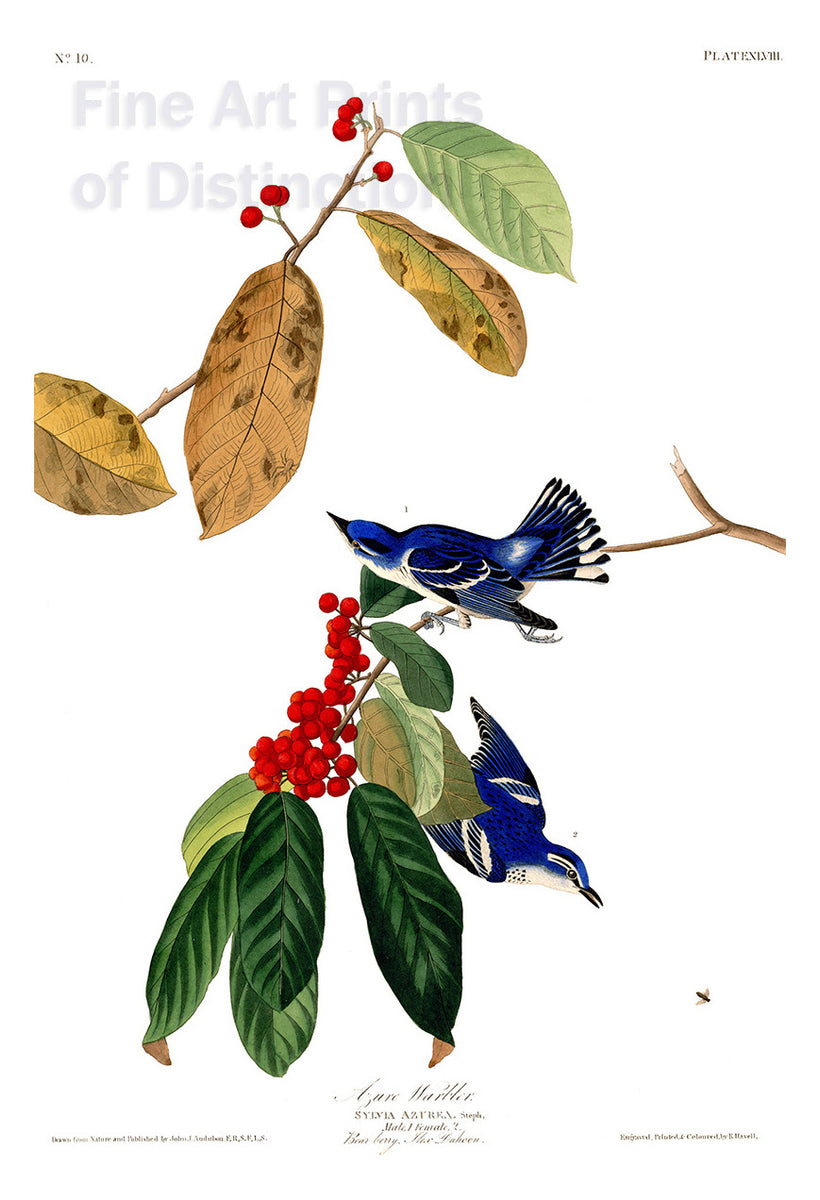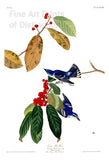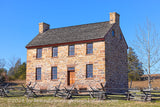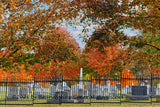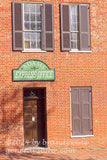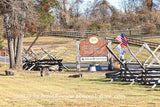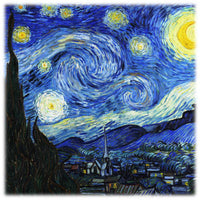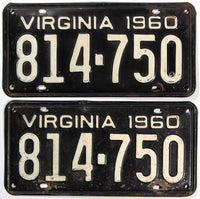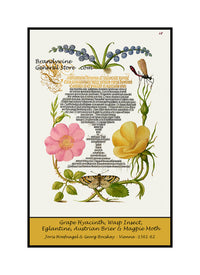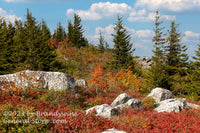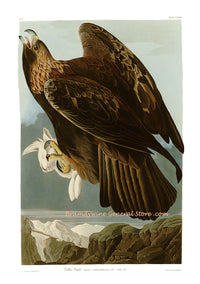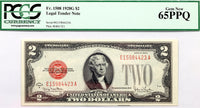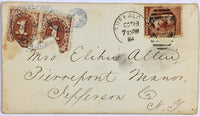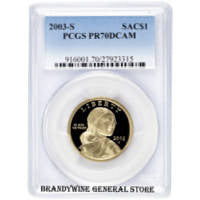Azure Warbler by John James Audubon art print
An archival premium Quality art Print of the Azure Warbler by John James Audubon for sale by Brandywine General Store. This picture features two of the small songbirds, a male and female of the species, they are somewhat different in that both exhibit bright blue coloring. Mr. Audubon shows the pair of birds in a bearberry tree or bush which is full of bright red berries. The male is looking up above his head at a spider that is on a leaf, while the female is pursuing what looks to be a small bee in flight. Audubon painted these colorful birds for his ornithology book, The Birds of America which was published in the 1st part of the 19th century. The Azure warblers were plate or picture number 48 in the Havell 1st edition of the book, in later editions these birds were called the Cerulean Warblers. Sylvia Azurea - Audubon describes the birds thus "So scarce is this bird in the Middle Districts, that its discovery in the State of Pennsylvania has been made a matter of much importance. Its habits are consequently very little known, even at the present day, and it would appear that only a few individuals have been seen by our American ornithologists, one of which, a young female, has been figured by the Prince of MUSIGNANO. It arrives in the lower parts of the State of Louisiana, in company with many other species of Warblers, breeds there and sets out again about the beginning of October. It is as lively as most species of its genus, possesses the same manner of flight, moves sidewise up and down the branches and twigs, frequently changing sides, and hangs to the extremities of bunches of leaves or berries, on which it procures the insects and larvae of which its food is principally composed. The liveliness of its notes renders it conspicuous in those parts of the skirts of the forests which it frequents; and its song, although neither loud nor of long continuance, is extremely sweet and mellow. I have no precise recollection of the time when I first made a drawing of this pretty little bird, but know this well, that a drawing, which I had of it was one of the unfortunate collection destroyed by the rats at Henderson. In Louisiana, where it is as numerous as other Sylviae, I have several times shot five or six during a single walk, towards the end of August, when the young are nearly full coloured. The nest is placed in the forks of a low tree or bush, more frequently on a dog-wood tree. It is partly pensile, projecting a little above the twigs to which it is attached, and extending below them for nearly two inches. The fibres of vines and of the stalks of rank herbaceous plants, together with slender roots, compose the outer part, being arranged in a circular manner. The lining consists entirely of the dry fibres of the Spanish moss. The female lays four or five eggs, of a pure white colour, with a few reddish spots at the larger end.". Audubon bird print #48

